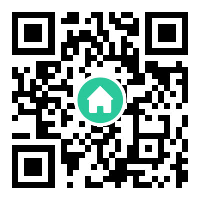Introduction to Telegram Sticker Bots
Telegram sticker bots have revolutionized how users express themselves in digital conversations. As a core feature of the Telegram messaging platform, these bots allow individuals and communities to create, share, and manage custom sticker packs effortlessly. Unlike other platforms where sticker creation is limited to official partnerships or complex tools, Telegram’s open ecosystem empowers anyone to design and distribute stickers through user-friendly bots. This democratization of creativity has turned Telegram into a hub for personalized communication, fostering a vibrant culture of artistic expression and humor.
How Telegram Sticker Bots Work
At their core, Telegram sticker bots function as automated intermediaries between creators and users. Bots like @Stickers or @StickerMakerBot guide users through a step-by-step process to upload images, convert them into stickers, and publish packs. The process typically involves formatting images to meet Telegram’s requirements (e.g., PNG files with transparent backgrounds), assigning emoji triggers, and organizing stickers into named packs. Once published, these packs become accessible to anyone on Telegram, either via direct links or through the platform’s built-in sticker store. This seamless integration ensures that even non-technical users can participate in sticker creation.
Key Features of Popular Sticker Bots
Most Telegram sticker bots share common features designed to enhance usability. For instance, they offer real-time previews to help creators visualize how stickers will appear in chats. Advanced bots may include tools for resizing images, adjusting transparency, or batch-uploading multiple stickers. Some even support animated stickers, leveraging Telegram’s APNG (Animated Portable Network Graphics) format. Additionally, bots often provide analytics, such as download counts or user feedback, enabling creators to refine their designs. The best bots prioritize simplicity, ensuring that the technical aspects never overshadow the creative process.

Community and Cultural Impact
Telegram sticker bots have cultivated global communities centered around niche interests. From meme culture to social activism, stickers serve as visual shorthand for shared experiences. For example, during global events like the COVID-19 pandemic, sticker packs emerged to humorously capture lockdown life. Activists have also leveraged stickers to spread awareness about causes, blending art with advocacy. This cultural resonance is amplified by Telegram’s privacy-focused model, which allows anonymous creation and distribution. As a result, sticker bots have become tools for both personal expression and collective storytelling.
Monetization Opportunities for Creators
While many creators design stickers purely for fun, Telegram sticker bots also open doors for monetization. Some developers offer premium sticker packs through third-party payment platforms, using bots to deliver exclusive content after purchase. Others integrate affiliate marketing by promoting brands within sticker designs. Telegram itself has experimented with revenue-sharing models, though most monetization efforts remain community-driven. For indie artists, sticker bots provide a low-barrier entry to showcase their work to millions of users, potentially attracting commissions or collaborations.
Challenges and Future Developments
Despite their popularity, Telegram sticker bots face challenges. Copyright infringement remains a concern, as bots rarely verify ownership of uploaded artwork. Telegram has implemented reporting systems, but enforcement is inconsistent. Additionally, the oversaturation of low-quality sticker packs can make discovery difficult for new creators. Looking ahead, advancements in AI could streamline sticker creation—imagine bots that auto-generate stickers from text prompts or photos. Integration with augmented reality (AR) might also enable interactive 3D stickers. As Telegram continues to evolve, its sticker ecosystem will likely push the boundaries of digital communication.
Conclusion
Telegram sticker bots exemplify the platform’s commitment to user-driven innovation. By simplifying sticker creation and fostering a decentralized community, they’ve transformed mundane chats into dynamic visual exchanges. Whether used for jokes, activism, or art, these bots prove that communication tools thrive when they prioritize accessibility and creativity. As technology advances, Telegram’s sticker ecosystem will undoubtedly remain at the forefront of redefining how we connect in the digital age.












